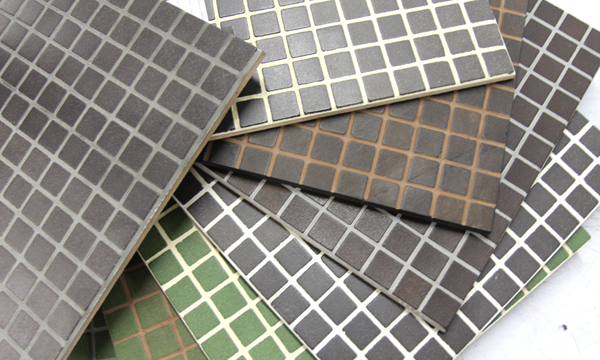Innovation Development Pattern of Upcycled Materials in Thailand
Main Article Content
Abstract
This study examines the development process of successfully commercialized upcycled materials in the architecture and construction industry in Thailand. Five upcycled materials items in Thailand were chosen for this study. They were 1) Glass Tile 2) JAVA Core 3) Kokoboard 4) Eco Pine Door and 5) Ekoblok. Interviews with innovators, developers and marketing directors of the chosen items were conducted and summarized into development processes. These development processes were then compared with the process found in literature review. The similarities or differences among the processes were analyzed, synthesized and summarized.
The research results identified the commonalities among development processes of upcycled materials, which could be summarized into 7 steps: 1) Ideation, 2) Scoping, 3) Development, 4) Testing, 5) Launching, 6) Mass Production and 7) Product Distribution. This process is which different from the process found in the literature review. There is no business analysis and found 2 additional steps, which are Mass Production and Distribution step.
Downloads
Article Details

This work is licensed under a Creative Commons Attribution-NonCommercial-NoDerivatives 4.0 International License.
All material is licensed under the terms of the Creative Commons Attribution 4.0 International (CC-BY-NC-ND 4.0) License, unless otherwise stated. As such, authors are free to share, copy, and redistribute the material in any medium or format. The authors must give appropriate credit, provide a link to the license, and indicate if changes were made. The authors may do so in any reasonable manner, but not in any way that suggests the licensor endorses you or your use. The authors may not use the material for commercial purposes. If the authors remix, transform, or build upon the material, they may not distribute the modified material, unless permission is obtained from JARS. Final, accepted versions of the paper may be posted on third party repositories, provided appropriate acknowledgement to the original source is clearly noted.
References
Berge, B. (2009). Ecology of building materials (2nd ed.). Oxford, UK: Architectural Press.
Braungart, M., & McDonough, W. (2002). Cradle to cradle: Remaking the way we make things (2nd ed.). United Kingdom: Vintage books.
Braungart, M., McDonough, W., & Bollinger, A. (2007). Cradle-to-cradle design: creating healthy emissions – a strategy for eco-effective product and system design. Journal of Cleaner Production, 15(13–14), 1337–1348.
Booz, E. G., Allen, J. L., & Hamilton, C. L. (1982). New product management for the 1980s. New York: Booz, Allen & Hamilton Press.
California Integrated Waste Management Board. (2000). Designing with vision: A technical manual for materialchoices in sustainable construction. California, CA, USA.: California Environmental Protection Agency.
Calkins, M. (2009). Materials for sustainable sites: A complete guide to the evaluation, selection, and use of sustainable construction materials. United States: Wiley.
Chini, A. R. (2007). General issues of construction materials recycling in USA. In Sustainable construction. Materials and practice: challenges for the new Millennium. Netherlands: IOS press.
Conseil International du Batiment [CIB]. (1999). CIB Agenda 21: On sustainable construction. Netherlands: CIB report publication.
Cooper, R. G., & Edgett, S. J. (1999). Product development for the service sector. Cambridge, MA.: Perseus Books.
ECO MAT Co., Ltd. (2016). EKOBLOK. Retrieved March 1, 2016, from http://www.greenindustry.in.th/want_to_sell.php?id=1641.
Intrachooto, S. (2009). Reuse. Bangkok: Phongwarin Printing.
Intrachooto, S. (2013). Upcycling. Pathumthani, Thailand: NSTDA.
Luangcharoenrat, C., & Intrachooto, S. (2013). A comparative study of green building evaluation standards: Identifying major/minor emphasis on environment, resource and energy issues. Journal of Architectural/Planning Research and Studies, 10(1), 1-18.
Nagano, M. S., Stefanovitz, J. P., & Vick, T. E. (2014). Innovation management processes, their internal organizational elements and contextual factors: An investigation in Brazil. Journal of Engineering and Technology Management, 33, 63–92.
Noyraiphoom, J. (2016). Interview D2D, The door from the pine wood has eyes. Retrieved March 1, 2016, from http://malangphoo.com/?p=1292.
Panaram, A. (2012). JAVA Core material innovation from “coffee grounds” for the sustainability of the cafe culture. Retrieved March 1, 2016, from http://www.tcdcconnect.com/content/217/.
Phrawong, X. (2012). “Kaew Sing” granite from glass bottle helps reduce scrap steel. Retrieved March 1, 2016, from http://www.creativemove.com/architecture/granite-from-bottle/.
Richardson, M. (2011). Design for reuse: Integrating upcycling into industrial design practice. Retrieved April 1, 2014, from http://www.academia.edu/1052431/Design_for_Reuse_Integrating_Upcycling_Into_Industrial_Design_Practice.
Schaarschmidt, M., & Kilian, T., (2014). Impediments to customer integration into the innovation process: A case study in the telecommunications industry. European Management Journal, 32(2), 50–361.
Shahbaz, M., Chaudhary, A. R., & Ozturk, I. (2017). Does urbanization cause increasing energy demand in Pakistan? empirical evidence from STIRPAT model. Energy, 122, 83-93.
SMILE Resource Exchange. (2012). Trash or treasure? survey results indicate upcycling is becoming the growing green trend. Retrieved February 5, 2017, from http://www.smileexchange.ie/news/trash-or-treasure-survey-results-indicate-upcycling-is-becoming-the-growing.
Srisuwan, T. (2016). Review article: ETFE: New sustainable material. International Journal of Building, Urban, Interior and Landscape Technology, 7, 5-11.
Thornton, K. (1994, October 11). Reiner pilz, salvo in Germany. UK: SalvoNEWS.
Titeux, T. (2012). Kokoboard, made from natural waste by-products. Retrieved March 1, 2016, from http://www.tristantiteux.com/kokoboard-made-from-waste-by-products/.
Tucker, S. (2012). Upcycling a new corporate trend. Retrieved April 1, 2014, from http://hipcycle.com/blog/2012/05/30/upcycling-a-new-corporate-trend.
Ulrich, K., & Eppinger, S. (1995). Product design and development. New York: McGraw-Hill, Inc.
United States Environmental Protection Agency. (2008). Lifecycle construction resource guide. Retrieved February 5, 2017, from http://www.epa.gov/region4/p2.
Vefago, L. H. M., & Avellaneda, J. (2013). Recycling concepts and the index of recyclability for building materials. Resources. Conservation and Recycling, 72, 127-135.
Wagner, L. (2002). Materials in the economy material flows, scarcity, and the environment. U.S. geological survey circular 1221. Retrieved February 5, 2017, from https://pubs.usgs.gov/circ/2002/c1221/c1221-508.pdf.
Yimprayoon, C. (2016). Review Article: Zero energy building. Journal of Architectural/Planning Research and Studies, 13(2), 1-30.
Zhe, L., Yong, G., Park, H.-S., Dong, H., Dong, L., & Fujita, T. (2016). An energy-based hybrid method for assessing industrial symbiosis of an industrial park. Journal of Cleaner Production, 114, 132-140.


